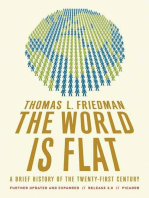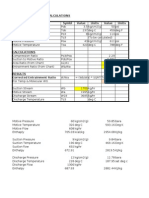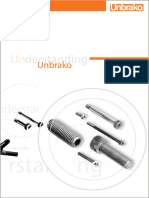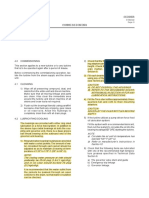0 ratings0% found this document useful (0 votes)
64 viewsBoundary Diagram PDF
Boundary Diagram PDF
Uploaded by
Vilas m ChinkeCopyright:
© All Rights Reserved
Available Formats
Download as PDF or read online from Scribd
Boundary Diagram PDF
Boundary Diagram PDF
Uploaded by
Vilas m Chinke0 ratings0% found this document useful (0 votes)
64 views1 pageOriginal Title
Boundary Diagram.pdf
Copyright
© © All Rights Reserved
Available Formats
PDF or read online from Scribd
Share this document
Did you find this document useful?
Is this content inappropriate?
Copyright:
© All Rights Reserved
Available Formats
Download as PDF or read online from Scribd
Download as pdf
0 ratings0% found this document useful (0 votes)
64 views1 pageBoundary Diagram PDF
Boundary Diagram PDF
Uploaded by
Vilas m ChinkeCopyright:
© All Rights Reserved
Available Formats
Download as PDF or read online from Scribd
Download as pdf
You are on page 1of 1
Design FMEA
Inputs to Design FMEA
Robustness
Tools
(Robustness
Linkages)
Boundary
Diagram
Robustness Tools (Robustness Linkages) have been added to the
FMEA process to significantly reduce vehicle campaigns, enhance the
corporate image, reduce warranty claims, and increase customer
satisfaction, These Robustness Tools primarily emanate from the
P-Diagram, which identifies the five noise factors. These factors need
to be addressed early to make the design insensitive to the noise
factors. This is the essence of Robustness, It is the engineer's
responsibility to ensure that the Robustness Tools are captured in the
engineering documentation.
A boundary diagram is a graphical illustration of the relationships
between the subsystems, assemblies, subassemblies, and
components within the object as well as the interfaces with the
neighboring systems and environments,
Boundary diagrams are a mandatory element of a Design FMEA. It
breaks the FMEA into manageable ievels. When correctly constructed
it provides detailed information to the Interface Matrix, P-Diagram, and
the FMEA. Itis important to note that when completed or revised, the
boundary diagram shall be attached to the FMEA.
Although boundary diagrams can be constructed to any level of detail,
itis important to identify the major elements, understand how they
interact with each other, and how they may interact with outside
systems.
Furthermore, early in the design program, a boundary diagram may be
no more than a few blocks representing major functions and their_
interrelationships at the system level. Then, as the design matures,
boundary diagrams may be revised, or additional ones developed to
illustrate lower levels of detail, all the way down to the component
level.
For example, a completed system FMEA boundary diagram has
blocks representing the subsystems within its scope and its interfacing
systems. Then, moving into the subsystem, another boundary diagram
is developed showing components of the subsystem as the block
elements. In addition, on large systems a third or fourth level boundary
diagram may be necessary to fully identity smaller subsystems,
components and their relationships to the lowest level
‘Continued on next page
FMEA Hanowooe Venion 42 — Corvni 2011 Ze
You might also like
- The Subtle Art of Not Giving a F*ck: A Counterintuitive Approach to Living a Good LifeFrom EverandThe Subtle Art of Not Giving a F*ck: A Counterintuitive Approach to Living a Good LifeRating: 4 out of 5 stars4/5 (5892)
- The Gifts of Imperfection: Let Go of Who You Think You're Supposed to Be and Embrace Who You AreFrom EverandThe Gifts of Imperfection: Let Go of Who You Think You're Supposed to Be and Embrace Who You AreRating: 4 out of 5 stars4/5 (1103)
- Never Split the Difference: Negotiating As If Your Life Depended On ItFrom EverandNever Split the Difference: Negotiating As If Your Life Depended On ItRating: 4.5 out of 5 stars4.5/5 (871)
- Grit: The Power of Passion and PerseveranceFrom EverandGrit: The Power of Passion and PerseveranceRating: 4 out of 5 stars4/5 (597)
- Hidden Figures: The American Dream and the Untold Story of the Black Women Mathematicians Who Helped Win the Space RaceFrom EverandHidden Figures: The American Dream and the Untold Story of the Black Women Mathematicians Who Helped Win the Space RaceRating: 4 out of 5 stars4/5 (912)
- Shoe Dog: A Memoir by the Creator of NikeFrom EverandShoe Dog: A Memoir by the Creator of NikeRating: 4.5 out of 5 stars4.5/5 (543)
- The Hard Thing About Hard Things: Building a Business When There Are No Easy AnswersFrom EverandThe Hard Thing About Hard Things: Building a Business When There Are No Easy AnswersRating: 4.5 out of 5 stars4.5/5 (352)
- Elon Musk: Tesla, SpaceX, and the Quest for a Fantastic FutureFrom EverandElon Musk: Tesla, SpaceX, and the Quest for a Fantastic FutureRating: 4.5 out of 5 stars4.5/5 (475)
- Her Body and Other Parties: StoriesFrom EverandHer Body and Other Parties: StoriesRating: 4 out of 5 stars4/5 (830)
- The Sympathizer: A Novel (Pulitzer Prize for Fiction)From EverandThe Sympathizer: A Novel (Pulitzer Prize for Fiction)Rating: 4.5 out of 5 stars4.5/5 (122)
- The Little Book of Hygge: Danish Secrets to Happy LivingFrom EverandThe Little Book of Hygge: Danish Secrets to Happy LivingRating: 3.5 out of 5 stars3.5/5 (414)
- The Emperor of All Maladies: A Biography of CancerFrom EverandThe Emperor of All Maladies: A Biography of CancerRating: 4.5 out of 5 stars4.5/5 (272)
- The Yellow House: A Memoir (2019 National Book Award Winner)From EverandThe Yellow House: A Memoir (2019 National Book Award Winner)Rating: 4 out of 5 stars4/5 (99)
- The World Is Flat 3.0: A Brief History of the Twenty-first CenturyFrom EverandThe World Is Flat 3.0: A Brief History of the Twenty-first CenturyRating: 3.5 out of 5 stars3.5/5 (2270)
- Devil in the Grove: Thurgood Marshall, the Groveland Boys, and the Dawn of a New AmericaFrom EverandDevil in the Grove: Thurgood Marshall, the Groveland Boys, and the Dawn of a New AmericaRating: 4.5 out of 5 stars4.5/5 (269)
- Team of Rivals: The Political Genius of Abraham LincolnFrom EverandTeam of Rivals: The Political Genius of Abraham LincolnRating: 4.5 out of 5 stars4.5/5 (235)
- A Heartbreaking Work Of Staggering Genius: A Memoir Based on a True StoryFrom EverandA Heartbreaking Work Of Staggering Genius: A Memoir Based on a True StoryRating: 3.5 out of 5 stars3.5/5 (232)
- Thermo Compressor CalculatorDocument6 pagesThermo Compressor CalculatorVilas m ChinkeNo ratings yet
- On Fire: The (Burning) Case for a Green New DealFrom EverandOn Fire: The (Burning) Case for a Green New DealRating: 4 out of 5 stars4/5 (74)
- Air Cooled CondenserDocument20 pagesAir Cooled CondenserVivek Singh100% (1)
- The Unwinding: An Inner History of the New AmericaFrom EverandThe Unwinding: An Inner History of the New AmericaRating: 4 out of 5 stars4/5 (45)
- Ideation Process: To Gain An Empathic Understanding of The Problem You Are Trying To SolveDocument2 pagesIdeation Process: To Gain An Empathic Understanding of The Problem You Are Trying To SolveVilas m ChinkeNo ratings yet
- UnbrakoDocument47 pagesUnbrakoVilas m ChinkeNo ratings yet
- 11-4SN (G, G ) 11-4SN (G, G ) : Precision RegulatorDocument2 pages11-4SN (G, G ) 11-4SN (G, G ) : Precision RegulatorVilas m ChinkeNo ratings yet
- Trico Oil LevelerDocument1 pageTrico Oil LevelerVilas m ChinkeNo ratings yet
- Xfmea Report Sample - Design FMEA: in Addition To This Summary, This Report Includes The Following FormsDocument6 pagesXfmea Report Sample - Design FMEA: in Addition To This Summary, This Report Includes The Following FormsVilas m ChinkeNo ratings yet
- Unbrako US Product Guide PDFDocument144 pagesUnbrako US Product Guide PDFVilas m ChinkeNo ratings yet
- Product Brochure Kunkle Safety Relief Valves Product Overview Kunkle Valve en en 5198290Document12 pagesProduct Brochure Kunkle Safety Relief Valves Product Overview Kunkle Valve en en 5198290Vilas m ChinkeNo ratings yet
- Screw Thread For UNC PDFDocument40 pagesScrew Thread For UNC PDFVilas m Chinke100% (1)
- Material ASTM A217Document1 pageMaterial ASTM A217Vilas m ChinkeNo ratings yet
- Steel Casting DrawingDocument8 pagesSteel Casting DrawingVilas m ChinkeNo ratings yet
- Engineering Structures and MaterialsDocument51 pagesEngineering Structures and MaterialsVilas m ChinkeNo ratings yet
- Flow Vs PowerDocument2 pagesFlow Vs PowerVilas m ChinkeNo ratings yet






















































